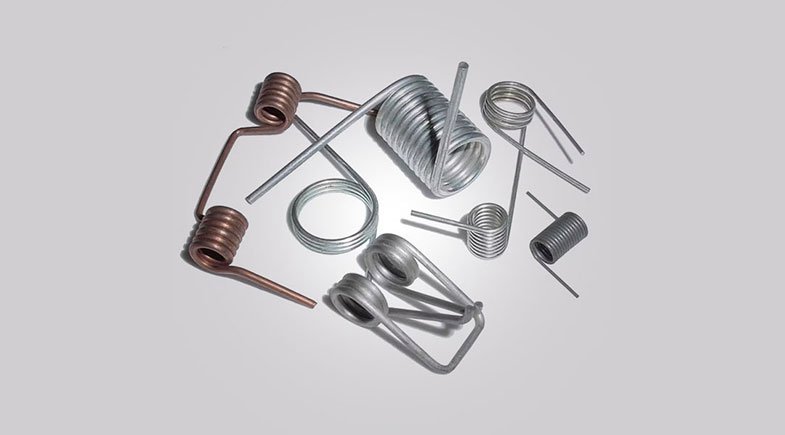- Tension Springs
- Compression Springs
- Disc Spring
- DIN2093 Disc Spring
- Wire Forms
- Drawbar Spring
- Wave Washer
- Barrel Springs
- Thread Insert
- Spiral Springs
- Torsion Springs
- Die Springs
- Volute Springs
- Belleville Washers
- Taper Spring
- Helical Spring
- Coil Spring
- Heavy Duty Spring
- Solid Thread Insert
- Thread Repair Kit
- Slotted Disc Spring
- DIN6796 Belleville Washer
Torsion Springs – Generating Rotational Force (Torque)
About the Product
Torsion springs are helical springs that work by twisting the ends to create **angular displacement**, which results in stored mechanical energy. When the load is removed, the spring attempts to return to its original position, exerting a torque. They are commonly used over a shaft or arbor and function by reducing their coil diameter and increasing their body length when deflected, making them suitable for hinges, levers, and clips.

- Provides predictable torque over rotation angle.
- Customizable leg ends (straight, hooks, bends) for mounting.
- Used for balancing and holding components in angular positions.
- Can be single-bodied or double-bodied (double torsion springs).
Torsion springs are fundamental components in assemblies that require rotational movement and return motion. From simple clothespins and mousetraps to complex automotive throttle body assemblies, they convert rotational energy into a measurable twisting force. Customization of the leg angle is critical for correct installation and function.
Technical Specifications
Characteristics: Helical coil that works via twisting, with open winding for minimal friction.
Measurements: Wire Diameter: 0.15 mm – 15 mm. Outer Diameter: 5 mm – 100 mm. Active Coils: Variable.
Configurations: Single or double body, close-wound or open-wound, various leg end styles (straight offset, straight torsion, hinge, hook).
Key Parameters: Torque at a specified angle, direction of coil (left or right hand), leg length and end style, spring rate.
Rate or Stiffness: From 0.01 N.m/degree to 1 N.m/degree.
Unit of Measure: mm, N.m, degrees of rotation.
Service Life: Designed for high endurance, often exceeding 500,000 cycles depending on the stress level.
Tolerances: +/- 10% on torque at specified angle, +/- 5 degrees on free leg angle.
Applications: Door hinges, automotive components (dashboards, locks), electrical switchgear, lever-actuated devices.

Ready to discuss your custom spring requirements? Contact us now